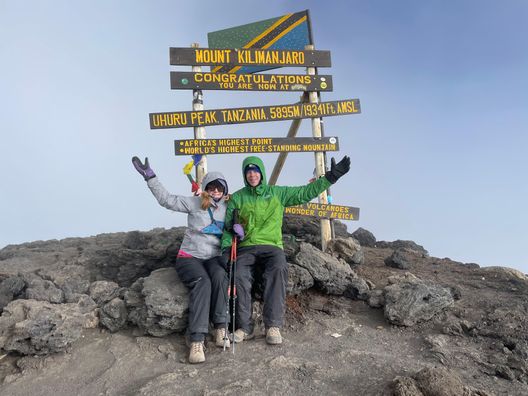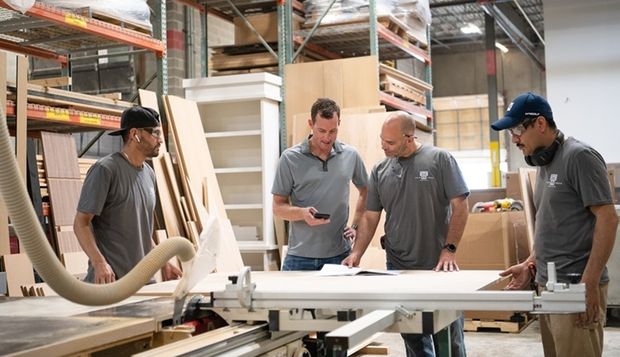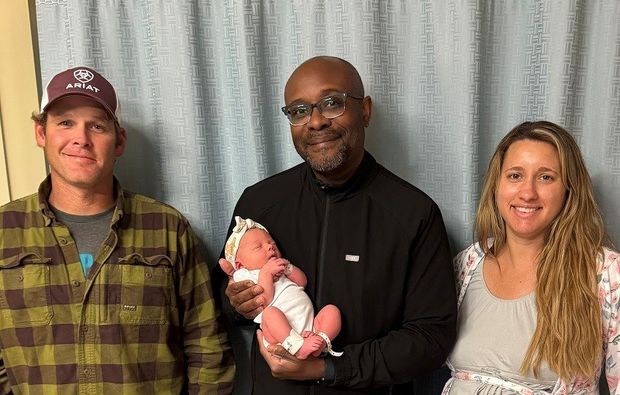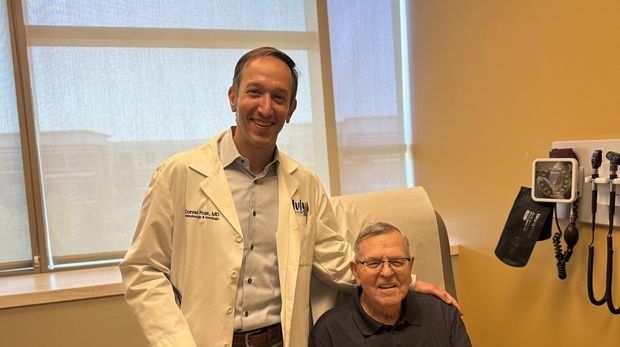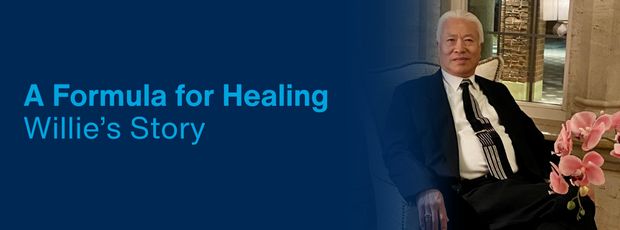Sarah L. and her husband were filled with anticipation as they prepared to welcome their baby. But in the midst of that joy, Sarah noticed something unexpected — a lump under her arm, followed by another in her breast. Trusting her instincts, she didn’t wait to act.
“I’m the type of person who doesn’t ignore anything. I always go to the doctor, but I didn’t think it was a big deal at first,” she said. “I was pregnant, so I googled it and read that breast tissue can change during pregnancy. Still, it was alarming because the lump felt large.”
What began as a quiet worry quickly became one of the most overwhelming moments of her life. Within days, heartbreak and fear collided. Sarah miscarried and then received news no one is ever prepared for.
“I found out I was having a miscarriage and then literally the next day, I found out that I was diagnosed with cancer,” she said.
Moving Quickly from Fear to Action
Sarah recalls how quickly everything moved once she received her diagnosis. “It was just a whirlwind,” she said. “There was a lot to take in, but my husband was by my side through it all, writing everything down and advocating on my behalf.”
That speed mattered in her case. Within days, Sarah was meeting with Amrit Mangat, MD, FACS, Breast Surgeon at Duly Health and Care, along with the broader care team. Each appointment and each step brought her closer to a plan.
“It was overwhelming, but also reassuring,” she said. “I didn’t have to sit and wait. I knew what was coming next.”
The urgency of moving quickly from diagnosis to treatment in certain situations is something both Sarah and Dr. Mangat emphasize.
“The waiting is very hard for patients,” Dr. Mangat said. “That’s why our breast nurse navigators are so important. They reach out after diagnosis, offer support, and help expedite appointments if needed. They’re really key in making patients feel supported and cared for.”
At Duly, breast cancer screening patients move from screening imaging to pathology results in less than 20 days, far faster than national averages. For our breast cancer patients, that speed offers something priceless: clarity, a plan, and hope.
Women should begin annual screening mammograms at age 40. Learn more about who should be screened and how to prepare for your next mammogram >
Dr. Mangat remembers Sarah’s case well. She continues to see Sarah on a regular basis and recommends continued monitoring with imaging. “She was young at diagnosis, and that can potentially make things more serious,” she said. “Women in their 30s aren’t typically screened, so patients like Sarah are usually diagnosed when they notice a symptom — a lump, pain, certain types of nipple discharge, or skin changes.”
A Comprehensive Treatment Journey
Due to the tumor’s type and characteristics, Sarah’s treatment began with chemotherapy. “Sometimes we start with chemotherapy to shrink the tumor before surgery and allow for breast conservation,” Dr. Mangat said. “Other times it’s necessary because of the type of the tumor. After chemotherapy, we use imaging such as MRIs to evaluate the response and then plan surgery accordingly.”
Radiation therapy played another key part in Sarah’s treatment, and she gives credit to Katherine Baker, MD, Radiation Oncologist at Duly, and her team for their thoughtful care. Day after day, Sarah would leave work and head to her appointment — a routine that soon felt less clinical and more personal.
“Dr. Baker and her team were absolutely incredible,” she said. “I’d go in every afternoon around 4:15, and it just felt like family. They were so kind and welcoming that by the end, I was actually sad not to see them every day.”
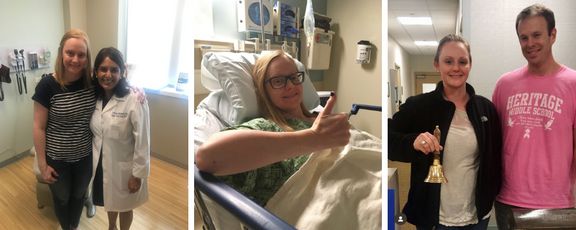
A Genetic Discovery
Sarah also underwent genetic testing. Through this testing, she discovered she has Lynch syndrome, an inherited genetic disorder that increases the risk of developing certain cancers, particularly colorectal, endometrial, and ovarian cancers.
“Finding out I have Lynch syndrome was a lot to process,” she said. “It means ongoing monitoring and preventative care, like yearly colonoscopies and other screenings, but it also gives me the knowledge to take proactive steps.”
Through it all, Sarah found comfort in the compassionate, team-based approach. “The nurses, the doctors, everyone was so supportive,” she said. “They were there for me every step of the way.”
Dr. Mangat notes that this collaboration is by design. “Here, our subspecialties — medical oncology, radiation oncology, surgery, radiology, pathology — all work closely together. That cohesive, team-based is absolutely essential for our patients.”
Going through something like this, Sarah explained, “You’re forced to look at life differently. Things that used to stress you out feel different now. Of course, I still have stresses, but it’s just not the same.”
Climbing Higher: Life After Treatment
That new perspective inspired Sarah and her husband to pursue adventures they had dreamed about. “We like to hike and camp, and after all this, it was a goal of mine to do a big hike. We ended up hiking in Tanzania and summited Mount Kilimanjaro. It really lit a fire in me and cemented how important health is.”

Looking back on her care experience, Sarah says what stood out most wasn’t just the expertise of her medical team, but their support. “I never felt rushed. I know these doctors deal with such heavy burdens every day, yet they were fully present for me, and that made a huge difference.”
Today, Sarah reflects on her journey with gratitude — for her husband, who was with her every step of the way, for her care team, who acted quickly and compassionately, and for the strength she discovered within herself. She shares her story in the hope that it encourages others to listen to their bodies and seek care without delay.
Dr. Mangat echoes that advice. “Don’t ignore symptoms, and follow the screening guidelines,” she said. “Annual screening mammograms should begin at 40, but women with family history or other risk factors may need to start earlier. Some women may need annual breast ultrasounds or annual MRIs based on their risk of lifetime development of breast cancer.”
“I never thought this would be part of my story,” Sarah said. “But I’ve learned that even in the hardest moments, you can find support, you can find hope, and you can keep moving forward.”
Ready to take charge of your breast health?
Schedule your mammogram today
Health Topics:

